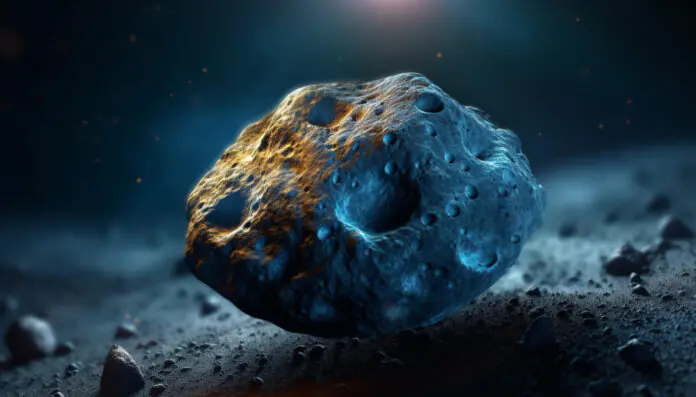The European space agency launches the Ramses mission to study Apophis as it approaches Earth in 2029, aiming to enhance planetary defence
In April 2029, the asteroid 99942 Apophis, larger than the Eiffel Tower, will pass remarkably close to Earth, igniting both excitement and scientific curiosity. Initially viewed with concern for a potential collision, researchers now see this close encounter as a unique opportunity to study the asteroid in detail. The European Space Agency (ESA) has announced the Rapid Apophis Mission for Security and Safety (Ramses), which aims to gather crucial data about Apophis’s size, shape, mass, and spin.
Apophis will come within 20,000 miles (32,000 kilometres) of Earth—about one-tenth the distance to the Moon—on April 13, 2029. This unprecedented proximity positions the asteroid closer than geostationary satellites that provide essential services like television broadcasting and weather forecasting. Dr. Holger Krag, head of ESA’s space safety program office, emphasized the importance of this mission, noting that no asteroid is expected to approach Earth as closely for thousands of years.
The Ramses mission will not only monitor the asteroid’s physical properties but also observe how it interacts with Earth’s gravitational field. Krag explained that this interaction could slightly reshape Apophis, potentially causing surface landslides. The data collected will inform scientists about the risks posed by asteroids and the possibility of future deflection strategies.
After its discovery in 2004, Apophis sparked widespread concern due to fears of an Earth impact. NASA has since ruled out potential collisions in 2029 and 2036, ensuring safety for at least the next century. Nonetheless, ongoing investigations into asteroids remain crucial, as the history of our planet demonstrates the catastrophic consequences of significant impacts.
Beyond Ramses, NASA’s DART mission previously tested asteroid deflection by impacting Dimorphos. The upcoming ESA mission will help refine the techniques needed for any future asteroid threats. The Ramses mission aims to gather data essential for planning such defensive actions, stressing the need for rapid reconnaissance before engaging with any asteroid.
The Ramses mission’s approval will depend on funding decisions expected at the end of next year, but plans already include launching in early 2028. Alongside Ramses, NASA’s Osiris-Apex mission will rendezvous with Apophis shortly after the asteroid’s close encounter, further enhancing our understanding of this intriguing celestial body.
Dr. Terik Daly from Johns Hopkins Applied Physics Laboratory highlighted the significance of this opportunity, noting that the data Ramses collects will allow for analysis of the changes Apophis undergoes during its flyby. As public interest grows in planetary defence, these missions not only contribute to scientific understanding but also inspire hope for humanity’s ability to avert potential disasters.
Analysis
Political
The Ramses mission highlights the increasing recognition among governments and space agencies of the need for planetary defence. International cooperation in monitoring and mitigating asteroid threats has become a political priority, leading to funding initiatives like ESA’s. This mission could influence future policy decisions regarding space exploration and funding allocations, as nations seek to ensure the safety of their citizens.
Social
Public engagement with missions like Ramses fosters a greater interest in science and space exploration. As people become more aware of the threats posed by near-Earth objects, there is potential for increased support for educational initiatives and funding for scientific research. The transparency surrounding missions cultivates a sense of shared responsibility and community in facing global challenges.
Racial
The mission’s global implications encourage discussions about equity in science. Diverse participation in space science and technology fields can enhance our understanding of the planetary defense, leading to inclusive strategies that consider different societal needs. Collaborations across various countries can also promote equitable access to space resources and information.
Gender
The presence of female scientists, such as Dr. Monica Grady and Dr. Alysa McCall, in leading roles within these missions emphasizes the importance of diversity in scientific fields. Their contributions inspire future generations of women in STEM, showcasing that opportunities in space exploration are accessible to all, regardless of gender.
Economic
Investing in planetary defence missions like Ramses has significant economic implications. By allocating resources to study and potentially mitigate asteroid threats, countries can protect their economies from the catastrophic consequences of impacts. Additionally, advancements in space technology often lead to innovations with commercial applications, benefiting multiple sectors.
